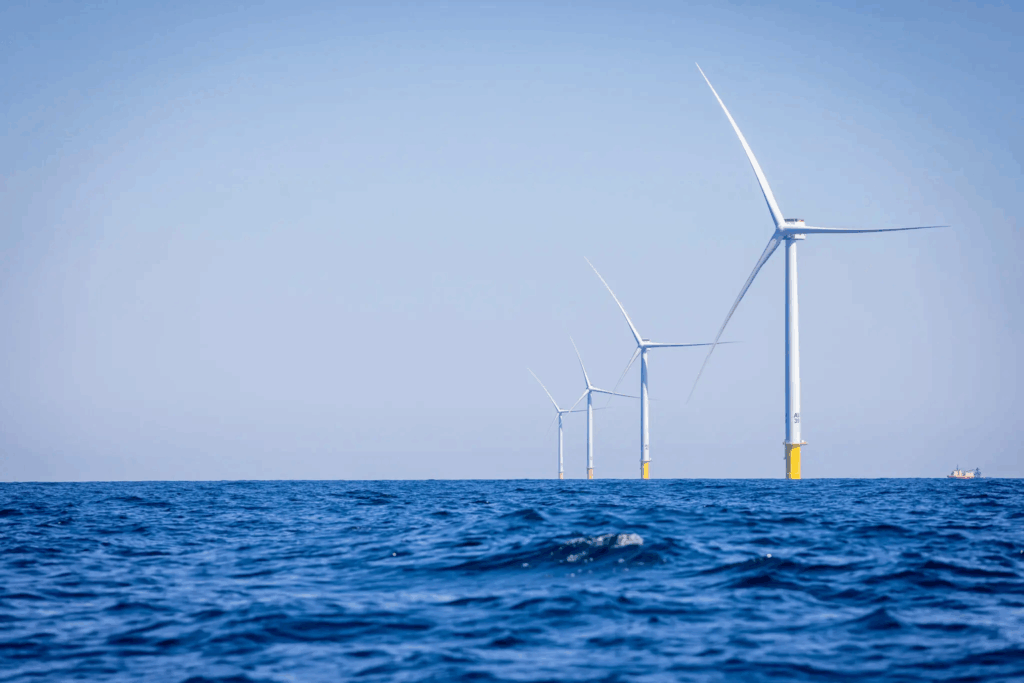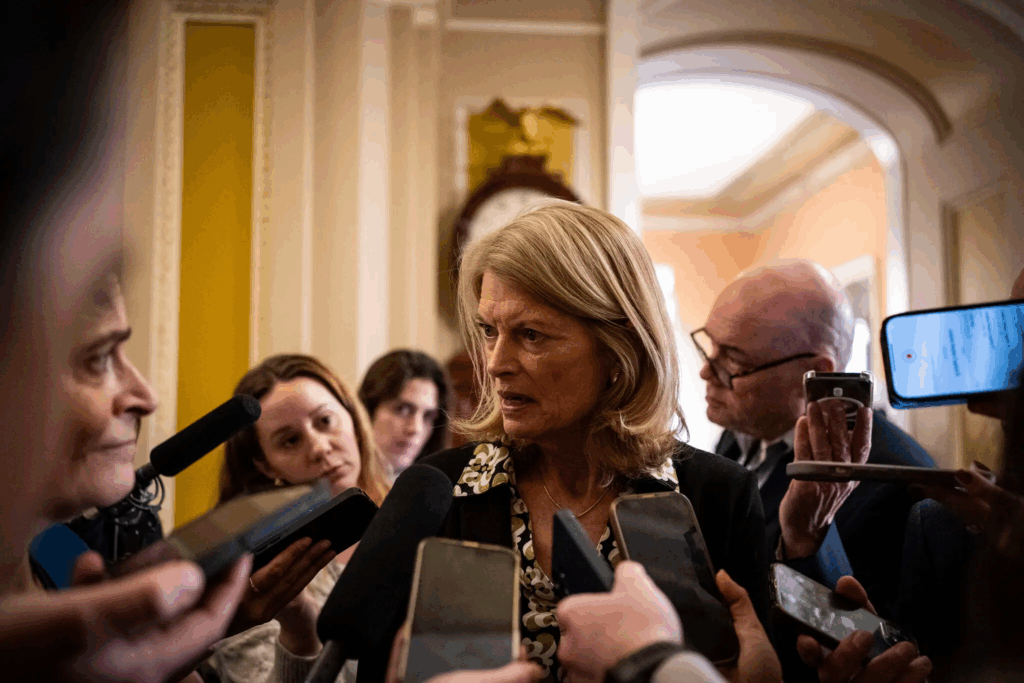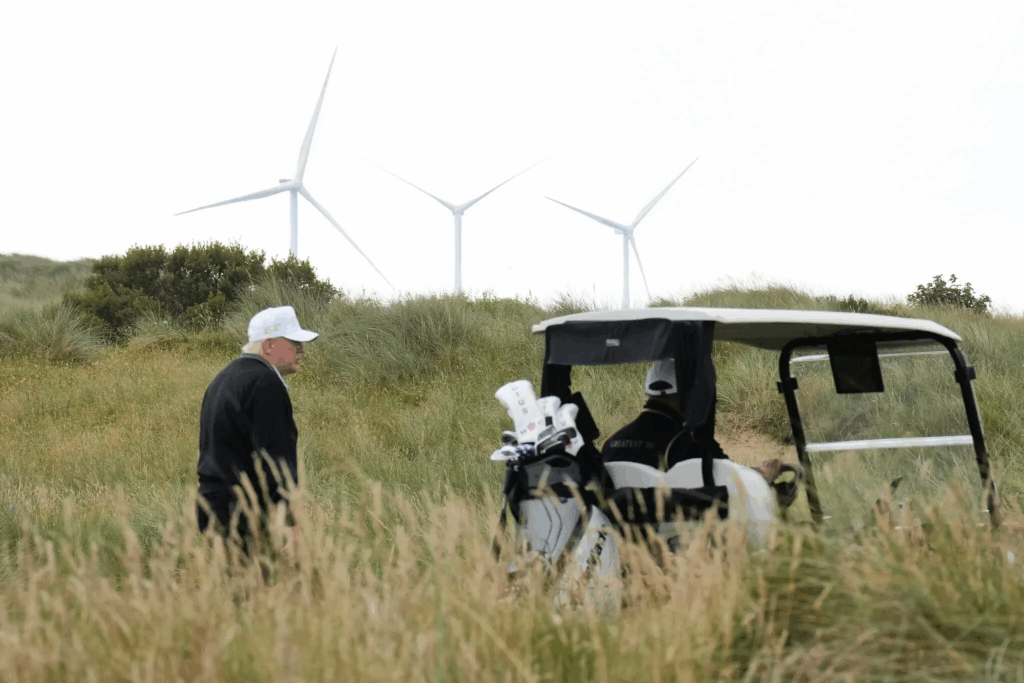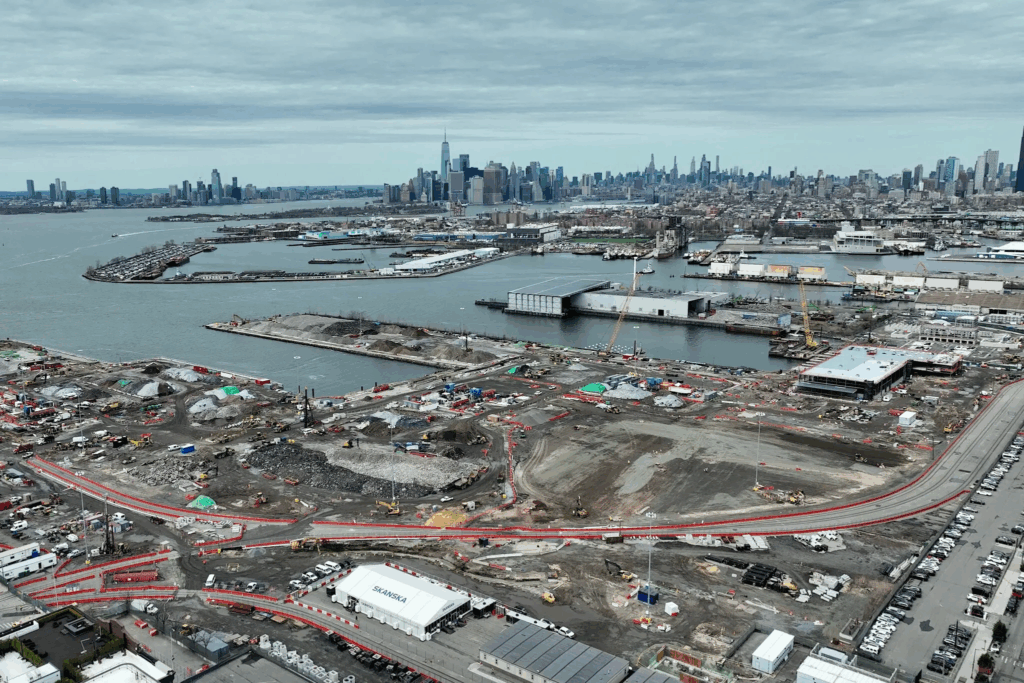Extreme Temperature Diary- Thursday August 7th, 2025/Main Topic: Suddenly, Trump Tightens a Vise on Wind Farms – Guy On Climate
Dear Diary. Trump’s madness continues on into August. Just today, most of Trump’s exorbitant tariffs took effect, which more than likely will increase inflation for the U.S. with little in the way of intended added manufacturing within our borders. We all know that Trump has been hostile towards green energy without any good reason besides stuffing fossil fuel interests with more cash. Now it is the wind industries’ turn to experience blowback from a leader hell bent to stoke up our global furnace (both puns intended).
The New York Times has written a thorough article today on what Trump is trying to do to wind generated energy. Here is their assessment:
nytimes.com
Suddenly, the Trump Administration Tightens the Vise on Wind FarmsFederal agencies have recently issued a barrage of restrictions that could halt construction of solar and wind farms on public and private lands. The Vineyard Wind project off Martha’s Vineyard, Mass. The Interior Department has ordered its lawyers to review some projects that have already been approved. Credit…Randi Baird for The New York Times The Vineyard Wind project off Martha’s Vineyard, Mass. The Interior Department has ordered its lawyers to review some projects that have already been approved. Credit…Randi Baird for The New York Times
  By Brad Plumer and Lisa Friedman By Brad Plumer and Lisa Friedman
Reporting from Washington
Aug. 7, 2025 Updated 9:17 a.m. ET
The Trump administration has sharply escalated its attacks on wind and solar power in recent days, issuing a barrage of policies that could halt the construction of renewable energy projects on public and private lands across the country.
The Interior Department is now requiring dozens of formerly routine consultations and approvals for wind and solar projects to undergo new layers of political review by the interior secretary’s office, a policy that is causing significant permitting delays. The agency is also opening investigations into bird deaths caused by wind farms and withdrawing millions of acres of federal waters previously available for leasing by offshore wind companies.
The Interior Department also signaled that it would review wind projects that have already been approved by the federal government but are being sued by opponents, and consider rescinding their permits, a step that could halt projects already under construction.
On Wednesday, the agency said it was reversing a Biden administration decision to approve the Lava Ridge Wind Project, a giant wind farm planned for southern Idaho that was opposed by state lawmakers because, among other things, it would be visible from the Minidoka National Historic Site, a World War II internment camp for Japanese Americans. The Trump administration said it had discovered “legal deficiencies” in the original approval but did not provide details.
 A panel of farmers, legislators and descendants of Japanese Americans incarcerated at the Minidoka camp discussed the Lava Ridge Wind Project in 2023.Credit…Lindsey Wasson/Associated Press A panel of farmers, legislators and descendants of Japanese Americans incarcerated at the Minidoka camp discussed the Lava Ridge Wind Project in 2023.Credit…Lindsey Wasson/Associated Press
At the same time, the Transportation Department is recommending minimum setback requirements for wind farms near federal highways and railroads, requiring them to be placed 1.2 miles away. And it ordered the Federal Aviation Administration to re-evaluate whether wind farms pose a danger to aviation, a potentially momentous step since nearly every wind farm in the country requires height clearance approvals from the agency.
Taken together, the policies amount to a far-reaching crackdown on wind and solar power, which provided 16 percent of the nation’s electricity last year and were two of the fastest-growing sources of power. Wind power is a major source of electricity in Republican-led states like Iowa, Oklahoma and Texas.
“These actions are so extreme that one can only hope that they reconsider once they see the impacts here,” said Jason Grumet, chief executive of the American Clean Power Association, which represents renewable energy producers. “This is going to dramatically affect our ability to develop energy in this country.”
President Trump has repeatedly expressed his distaste for both renewable energy technologies, calling them ugly and inefficient. His interior secretary, Doug Burgum, has adopted Mr. Trump’s rhetoric, referring to wind and solar as “gargantuan, unreliable, intermittent energy projects.”
 President Trump has called wind turbines “ugly monsters” that “destroy the beauty of your fields, your plains and your waterways.” Credit…Tierney L. Cross/The New York Times President Trump has called wind turbines “ugly monsters” that “destroy the beauty of your fields, your plains and your waterways.” Credit…Tierney L. Cross/The New York Times
Dozens of wind and solar projects that sit on both public and private lands nationwide are now stalled while waiting for what were once ordinary approvals from the federal government, Mr. Grumet said. While fewer than 5 percent of solar and wind projects are on public lands directly overseen by the Interior Department, many projects on private lands often need federal approvals to comply with wildlife protections or other laws.
One planned solar facility on private land in the Upper Midwest is currently delayed because federal agencies have halted all discussions over a needed water permit. Another large solar farm on private land in the West is being held up because it must now undergo three layers of political review, including by Mr. Burgum’s office.
“Projects in the late stages of development are suddenly getting their meetings with federal agencies canceled and can’t move forward,” Mr. Grumet said. “It’s costing companies tens of millions of dollars.”
Elizabeth Peace, a spokeswoman for the Interior Department, declined to comment on the delays but defended the agency’s stricter reviews. “Evaluating land use efficiency and environmental impact isn’t partisan, it’s responsible governance,” she said.
Republican objectionsSome of the administration’s actions have been so disruptive, they have provoked concern from Mr. Trump’s own party.
On Monday, Gov. Joe Lombardo of Nevada, a Republican, sent a letter to Mr. Burgum saying the Interior Department’s reviews have “not only stopped solar development on federal lands in Nevada, but also on private land where federal approvals such as transmission line rights of way are required.” Mr. Lombardo asked Mr. Burgum to establish a more workable review process for wind and solar projects.
Nearly one-third of Nevada’s electricity now comes from solar power, and most of the state is federal land.
In the past, Republican politicians have said they support an “all of the above” approach to energy policy, in which the federal government does not restrict any particular energy source. They saw that as a contrast to the Biden administration which, in an effort to fight climate change, subsidized wind and solar power while it tried to reduce oil and gas drilling on public lands and in federal waters.
But instead of simply lifting restrictions on fossil-fuel development and removing subsidies for renewable energy, the Trump administration is creating new roadblocks for wind and solar projects.
“We’re back to this place where it’s kind of dangerous, to pick winners and losers,” Senator Lisa Murkowski, Republican of Alaska, said at a recent hearing.
 In the past, Republican politicians have often backed an “all of the above” approach to energy policy, in which the federal government did not restrict any particular energy source. Credit…Haiyun Jiang for The New York Times In the past, Republican politicians have often backed an “all of the above” approach to energy policy, in which the federal government did not restrict any particular energy source. Credit…Haiyun Jiang for The New York Times
As the administration has made it harder for wind and solar, it has lowered costs and sped up permits for oil and gas drilling and coal mining. This week, the Interior Department approved the expansion of a coal mine in Montana, and on Wednesday Mr. Burgum announced the agency had completed a fast-track review of a federal coal lease in Utah.
While nearly all Republicans voted to end Biden-era tax credits for wind and solar power as part of a giant policy and tax bill signed into law on July 4, some senators successfully pushed for a slightly slower phaseout of the credits in order to limit the disruption to industry. That angered many House conservatives, who had wanted a faster termination of the subsidies.
To assuage those concerns, Mr. Trump issued an executive order shortly after the bill passed, directing the Treasury Department to limit the ability of wind and solar projects to qualify for the fast-disappearing tax credits.
Several Republicans criticized that move. On Monday, Senator Charles E. Grassley, an Iowa Republican, placed holds on three of Mr. Trump’s nominees for the Treasury Department, saying he was concerned that the agency was flouting the intent of Congress.
The removal of federal subsidies means that the amounts of new wind energy and solar energy added in the United States over the next five years are expected to be 50 percent lower and 23 percent lower, respectively, than previously projected, according to BloombergNEF.
Those projections do not account for the Trump administration’s most recent restrictions, which experts say could undermine the ability of renewable energy companies to get financing for projects.
“These policies are quite masterful at striking at the core of project development because they introduce a huge amount of uncertainty,” said Barbara Kates-Garnick, a professor at the Fletcher School at Tufts University and a former Massachusetts under secretary of energy. “They’re essentially making projects almost impossible to move forward.”
Escalating restrictionsMr. Trump has been a critic of wind power for years, ever since he unsuccessfully tried to stop an offshore wind farm from being built in view of one of his Scottish golf courses. On a recent trip to Scotland, he called wind turbines “ugly monsters” that “destroy the beauty of your fields, your plains and your waterways.”
His administration’s most recent orders go after wind and solar power on multiple fronts and lean into many of Mr. Trump’s biggest objections to the technologies.
 Mr. Trump at Trump International Golf Links in Scotland. He was unsuccessful in his efforts to stop a wind farm from being built within view of the course. Credit…Jacquelyn Martin/Associated Press Mr. Trump at Trump International Golf Links in Scotland. He was unsuccessful in his efforts to stop a wind farm from being built within view of the course. Credit…Jacquelyn Martin/Associated Press
In an order last week, the Interior Department said it would consider “energy density” when approving new energy projects, looking at how much energy they produce per acre of land. Critics of wind or solar projects often note that they take up far more space than nuclear reactors or gas wells.
Mr. Burgum said that considering energy density gave “rise to the question on whether the use of federal lands for any wind and solar projects is consistent with the law.” Ms. Peace, the Interior Department spokeswoman, said that new projects would be reviewed on a “case-by-case basis” under the new criteria and “no pre-decisional outcomes are made.”
The Interior Department also ordered reviews of whether wind farms were violating federal law by unintentionally killing birds, another frequent theme of Mr. Trump’s.
Wind energy is responsible for less than 0.01 percent of human-caused bird fatalities, per federal data, significantly less than buildings, cats or oil pits. The Audubon Society says that climate change poses a bigger threat to birds than wind power.
Mr. Trump has been particularly vocal about his dislike of wind farms off the Atlantic coast, and placed a moratorium on new approvals of offshore wind projects.
Many analysts assumed that meant the handful of offshore projects that were already under construction could proceed. But the Interior Department has recently ordered its lawyers to review projects that have already been approved but are currently facing lawsuits, to identify cases where rescinding the permits could be “appropriate.”
Those projects could include Vineyard Wind, a $4 billion wind farm off the coast of Martha’s Vineyard, Mass., that is under construction and already sending power to the grid.
“This latest order does open a door to go after projects that are already leased and permitted,” said Kate Sinding Daly, senior vice president for law and policy at the Conservation Law Foundation, a nonprofit organization. “But that would be unprecedented, and it’s not clear how legally they could even do that.”
In April, the Trump administration tried to halt a giant offshore wind farm already underway, the $5 billion Empire Wind project off the coast of Long Island, without providing a legal justification for doing so. After a backlash from New York officials, the administration eventually let the project proceed.
Equinor, the project’s developer, recently said that the delays and other regulatory changes had cost the company nearly $1 billion.
 The South Brooklyn Marine Terminal, staging site for Equinor’s Empire Wind offshore project. Credit…Equinor, via Reuters The South Brooklyn Marine Terminal, staging site for Equinor’s Empire Wind offshore project. Credit…Equinor, via Reuters
“We’re very concerned about the policy decisions that have been flowing out of the administration with regard to offshore wind,” said Erik Milito, the president of the National Ocean Industries Association, a trade group that represents offshore oil and gas as well as offshore wind companies.
Mr. Milito said the Trump administration’s policies were a “mirror image” of Biden administration efforts to curtail offshore oil and gas drilling, which his group also opposed.
The attacks on renewable energy come at an inopportune time, some experts said. Electricity demand is surging for the first time in decades, partly because of data centers needed for artificial intelligence, and power companies are struggling to keep up. There is a multiyear backlog for additional gas turbines and new nuclear reactors are years away. Taking wind and solar off the table could lead to higher electricity prices.
“The shame is that energy has somehow become a partisan issue, which it never was before,” said Ernest Moniz, who served as energy secretary in the Obama administration. “What we need to do is to get back to energy pragmatism and recognize that all of the above is the way forward.”
Brad Plumer is a Times reporter who covers technology and policy efforts to address global warming.
Lisa Friedman is a Times reporter who writes about how governments are addressing climate change and the effects of those policies on communities.
Here are more “ET’s” recorded from around the planet the last couple of days, their consequences, and some extreme temperature outlooks, as well as any extreme precipitation reports:
Haet advisories need to take into account how the thermal load of a house is affected by outdoor temps especially in places with no AC. — Destenie Nock, PhD (@destenie.bsky.social) 2025-08-08T01:10:20.704Z
On Japan’s 2nd All-time National heat record in a week. While these records are more likely now due to climate change, it’s worth looking at the details. Extreme marine heat wave.
West wind downslopes off mountains into valley town of Isesaki (where it hit 107) and heats due to drying/compression. — Jeff Berardelli (@weatherprof.bsky.social) 2025-08-06T02:53:59.844Z
A big talking point of climate change skeptics is “…but the 1930s were hot!”
It’s true. They are right. 1930s summers were super hot in the US!
But zoom out, and most of the globe was not.
Top image: 1930s global temp anomalies, compared to…
Bottom image: the last 10 years 1/ — Jeff Berardelli (@weatherprof.bsky.social) 2025-08-05T14:41:11.299Z
You may have noticed most of the tropical activity this season has been “close to home” in the NW Atlantic / SE coast. That’s because this season the relative warmest water is there (deep red=record), not in the main development region. Thus, for now the focus remains close to the SE US coast. — Jeff Berardelli (@weatherprof.bsky.social) 2025-08-05T01:45:22.144Z
Even if a total of 450 folks are added back, that will leave NWS ~a couple hundred short of what it was in January (and it was already widely regarded as understaffed even then).
The loss of institutional knowledge is definitely another concern and could complicate the hiring process. 🧵 — Chelsea Harvey (@chelseaeharvey.bsky.social) 2025-08-06T20:39:50.212Z
Need some relief from the heat Tampa Bay? Take a dip into the refreshi...
Never mind. The Gulf is en fuego! — Jeff Berardelli (@weatherprof.bsky.social) 2025-08-05T20:22:25.644Z
Today’s News on Sustainable Energy, Traditional Polluting Energy from Fossil Fuel, and the Green Revolution:
twitter.com
twitter.com
More on the Environment, Nature and Science:
twitter.com |





 The Vineyard Wind project off Martha’s Vineyard, Mass. The Interior Department has ordered its lawyers to review some projects that have already been approved. Credit…Randi Baird for The New York Times
The Vineyard Wind project off Martha’s Vineyard, Mass. The Interior Department has ordered its lawyers to review some projects that have already been approved. Credit…Randi Baird for The New York Times

 A panel of farmers, legislators and descendants of Japanese Americans incarcerated at the Minidoka camp discussed the Lava Ridge Wind Project in 2023.Credit…Lindsey Wasson/Associated Press
A panel of farmers, legislators and descendants of Japanese Americans incarcerated at the Minidoka camp discussed the Lava Ridge Wind Project in 2023.Credit…Lindsey Wasson/Associated Press President Trump has called wind turbines “ugly monsters” that “destroy the beauty of your fields, your plains and your waterways.” Credit…Tierney L. Cross/The New York Times
President Trump has called wind turbines “ugly monsters” that “destroy the beauty of your fields, your plains and your waterways.” Credit…Tierney L. Cross/The New York Times In the past, Republican politicians have often backed an “all of the above” approach to energy policy, in which the federal government did not restrict any particular energy source. Credit…Haiyun Jiang for The New York Times
In the past, Republican politicians have often backed an “all of the above” approach to energy policy, in which the federal government did not restrict any particular energy source. Credit…Haiyun Jiang for The New York Times Mr. Trump at Trump International Golf Links in Scotland. He was unsuccessful in his efforts to stop a wind farm from being built within view of the course. Credit…Jacquelyn Martin/Associated Press
Mr. Trump at Trump International Golf Links in Scotland. He was unsuccessful in his efforts to stop a wind farm from being built within view of the course. Credit…Jacquelyn Martin/Associated Press The South Brooklyn Marine Terminal, staging site for Equinor’s Empire Wind offshore project. Credit…Equinor, via Reuters
The South Brooklyn Marine Terminal, staging site for Equinor’s Empire Wind offshore project. Credit…Equinor, via Reuters